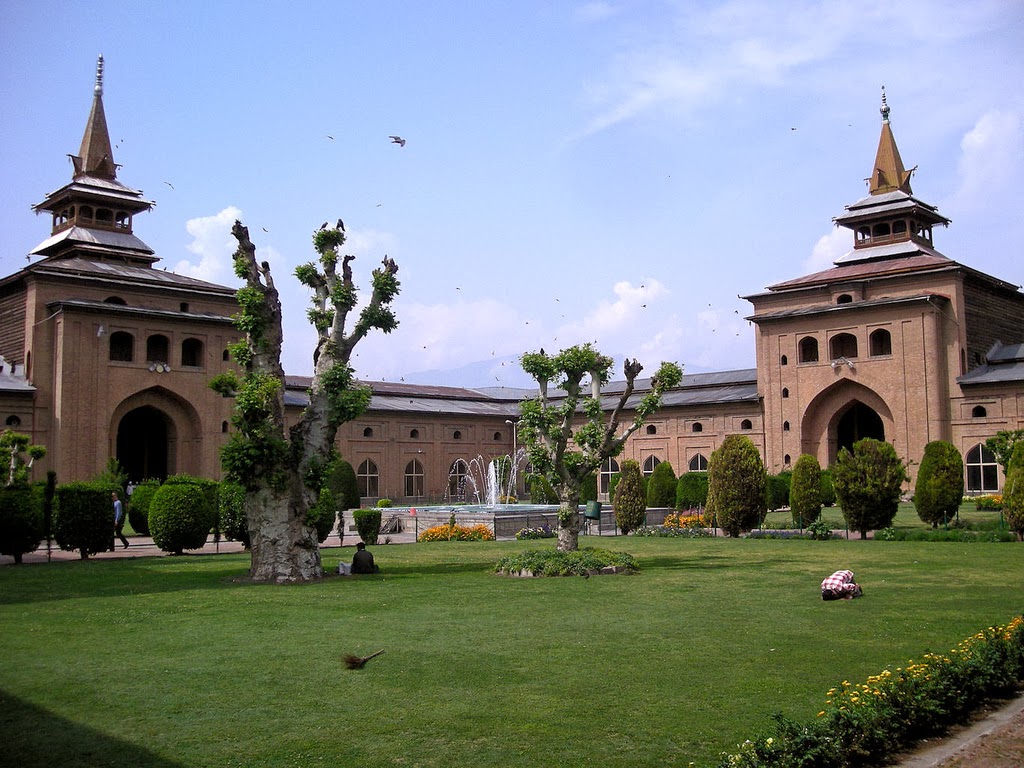Shalimar Bagh, (Hindi: शालीमार
बाग़, Urdu: شالیمار باغ), is a Mughal
garden linked through a channel to the northeast of Dal Lake, on its right bank located near Srinagar city in the Jammu
and Kashmir. Its other names are Shalamar Garden,
Shalamar Bagh, Farah Baksh and Faiz Baksh, and the other famous shore line
garden in the vicinity is Nishat
Bagh. The Bagh was built by Mughal Emperor
Jahangir for his wife Nur
Jahan, in 1619. The Bagh is considered the high point
of Mughal horticulture. It is now a public park.
While the recent history and
development of the Mughal types of gardens is credited to Emperor Jahangir, the
ancient history of the garden can be traced to the 2nd century when it was
built during the reign of Pravarsena II. Praversena II
founded the city of Srinagar and ruled in Kashmir from 79 AD to 139 AD. He had built
a cottage for his stay at the north eastern corner of the Dal Lake and had
named it Shalimar. The king, on his visits to a local saint by the name Sukarma Swami at Harwan, used to stop at this cottage. Over the years, the cottage
fell into ruins and later could not be located. However, the name of the
village remained as Shalimar. It is here that Emperor Jahangir built his
celebrated Shalimar Bagh, his dream project to please his queen. He enlarged the ancient garden in 1619
into a royal garden and called it 'Farah Baksh' ('the delightful'). He built it
for his wife Nur
Jahan.
The garden has three terraces.
The architectural details of the
three terraces of the garden are elaborate.
The first
terrace is a public garden or the outer garden ending in the Diwan-e-Aam
(public audience hall). In this hall, a small black marble throne was installed
over the waterfall.
The second terrace garden
along the axial canal, slightly broader, has two shallow terraces. The
Diwan-fa-Khas, which was accessible only to the noblemen or guests of the
court, now derelict, is in its centre. However, the carved stone bases and a
fine platform surrounded by fountains are still seen. The royal bathrooms are
located on the north-west boundary of this enclosure. The fountain pools of the
Diwan-i Khas, the Diwan-i-Aam, and in turn, the Zenana terrace ae supplied in
succession. It has 410 fountains.
In the third terrace, the
axial water channel flows through the Zenana garden, which is flanked by the
Diwan-i-Khas and chinar trees. At the entrance to this terrace, there are two
small pavilions or guard rooms that is the restricted and controlled entry zone
of the royal harem.
PHOTO CREDITS: www.jtdytravels.com, www.sketchkashmir.org












